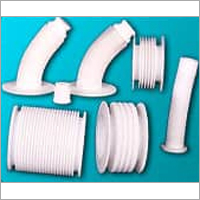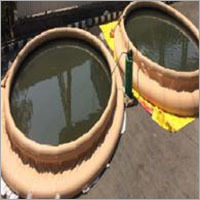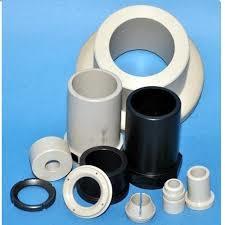

PTFE Bellows
100 INR/Piece
Product Details:
X
PTFE Bellows Price And Quantity
- 500 Piece
- 100 INR/Piece
PTFE Bellows Trade Information
- Cash on Delivery (COD) Cash in Advance (CID) Cash Advance (CA)
- 500 Piece Per Day
- 8 - 10 Days
- Yes
- Free samples are available
- Carton Box
- Australia Middle East Africa Central America Eastern Europe South America Western Europe Asia North America
- All India
Product Description
Polytetrafluoroethylene (PTFE) bellows are flexible, accordion-like structures made from PTFE, a synthetic fluoropolymer of tetrafluoroethylene. PTFE is commonly known by the brand name Teflon, which is a registered trademark of Chemours. PTFE is known for its unique combination of properties, including high chemical resistance, low friction, and high-temperature stability.
Bellows, in general, are used in various engineering applications to provide flexibility, expansion, and contraction in piping systems, machinery, and other equipment.
PTFE bellows specifically offer several advantages due to the characteristics of PTFE:
1. Chemical Resistance: PTFE is highly resistant to a wide range of chemicals, making PTFE bellows suitable for use in corrosive environments.
2. Temperature Stability: PTFE can withstand a broad temperature range, from very low temperatures to high temperatures. This makes PTFE bellows suitable for applications where temperature fluctuations are common.
3. Low Friction: PTFE has a low coefficient of friction, which means that PTFE bellows can move smoothly without much resistance.
4. Non-Stick Properties: PTFE is non-stick, which makes it resistant to adhesion of substances. This property is useful in applications where materials might otherwise stick to the surface.
5. Electrical Insulation: PTFE is an excellent electrical insulator, which can be important in certain applications.
PTFE bellows are commonly used in industries such as chemical processing, pharmaceuticals, food and beverage, aerospace, and semiconductor manufacturing. They are employed in applications where flexibility, chemical resistance, and durability are essential, such as in piping systems, pumps, valves, and other fluid-handling equipment.
These bellows can come in various shapes and sizes, and their design depends on the specific requirements of the application. The accordion-like structure allows them to expand and contract, accommodating movements and thermal expansions within a system while maintaining a seal to prevent leaks.
FAQs of PTFE Bellows:
Q: What is the hardness of the PTFE Bellows?
A: The hardness of the PTFE Bellows is rigid.Q: What size options are available for the PTFE Bellows?
A: The PTFE Bellows comes in customized sizes.Q: What type of bellows is the PTFE Bellows?
A: The PTFE Bellows is a type of PTFE bellows.Q: What color is the PTFE Bellows available in?
A: The PTFE Bellows is available in white.Q: What material is the PTFE Bellows made of?
A: The PTFE Bellows is made of PTFE.Tell us about your requirement

Price:
Quantity
Select Unit
- 50
- 100
- 200
- 250
- 500
- 1000+
Additional detail
Mobile number
Email

 English
English Spanish
Spanish French
French German
German Italian
Italian Chinese (Simplified)
Chinese (Simplified) Japanese
Japanese Korean
Korean Arabic
Arabic Portuguese
Portuguese Call Me Free
Call Me Free Send SMS
Send SMS Send Inquiry
Send Inquiry




